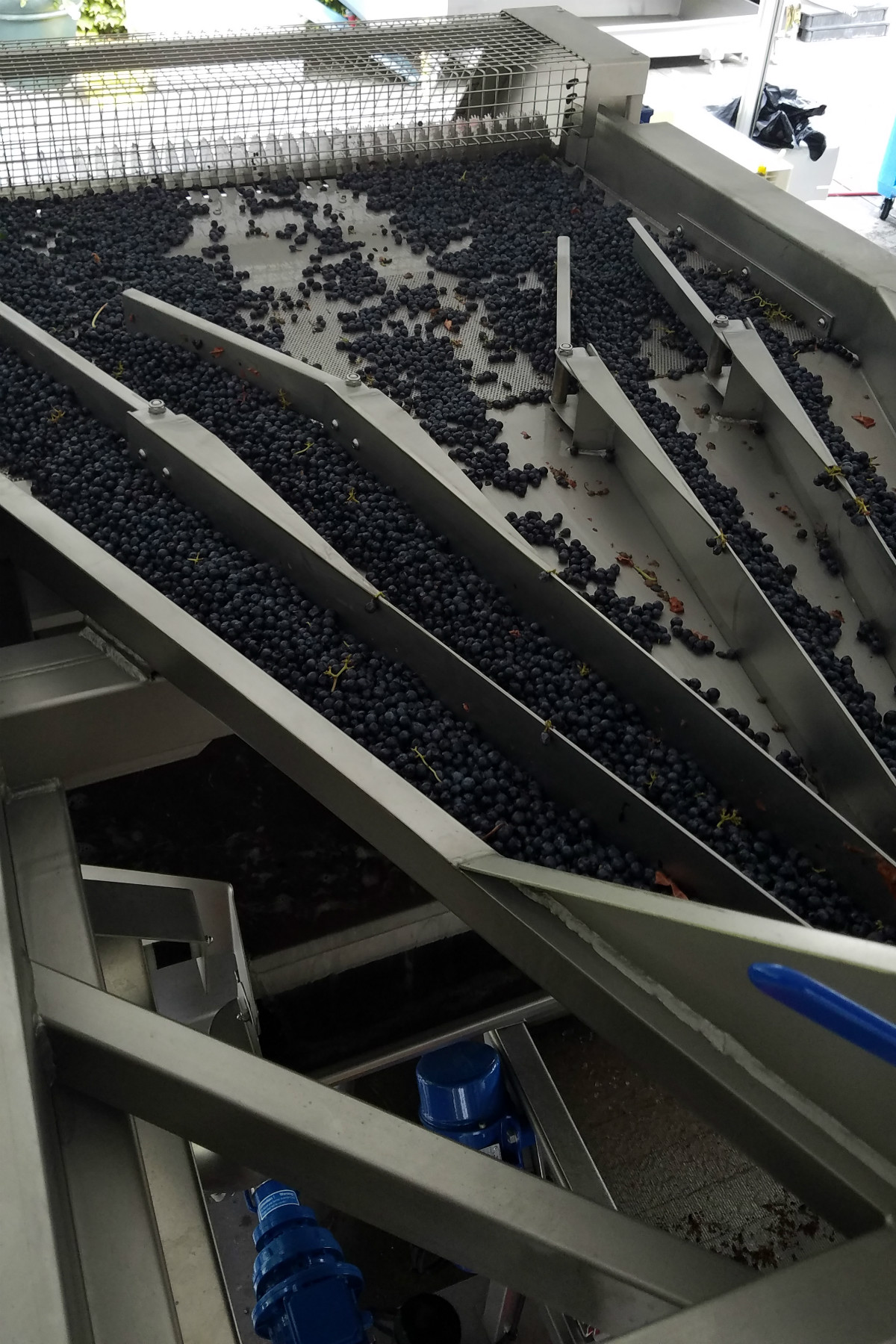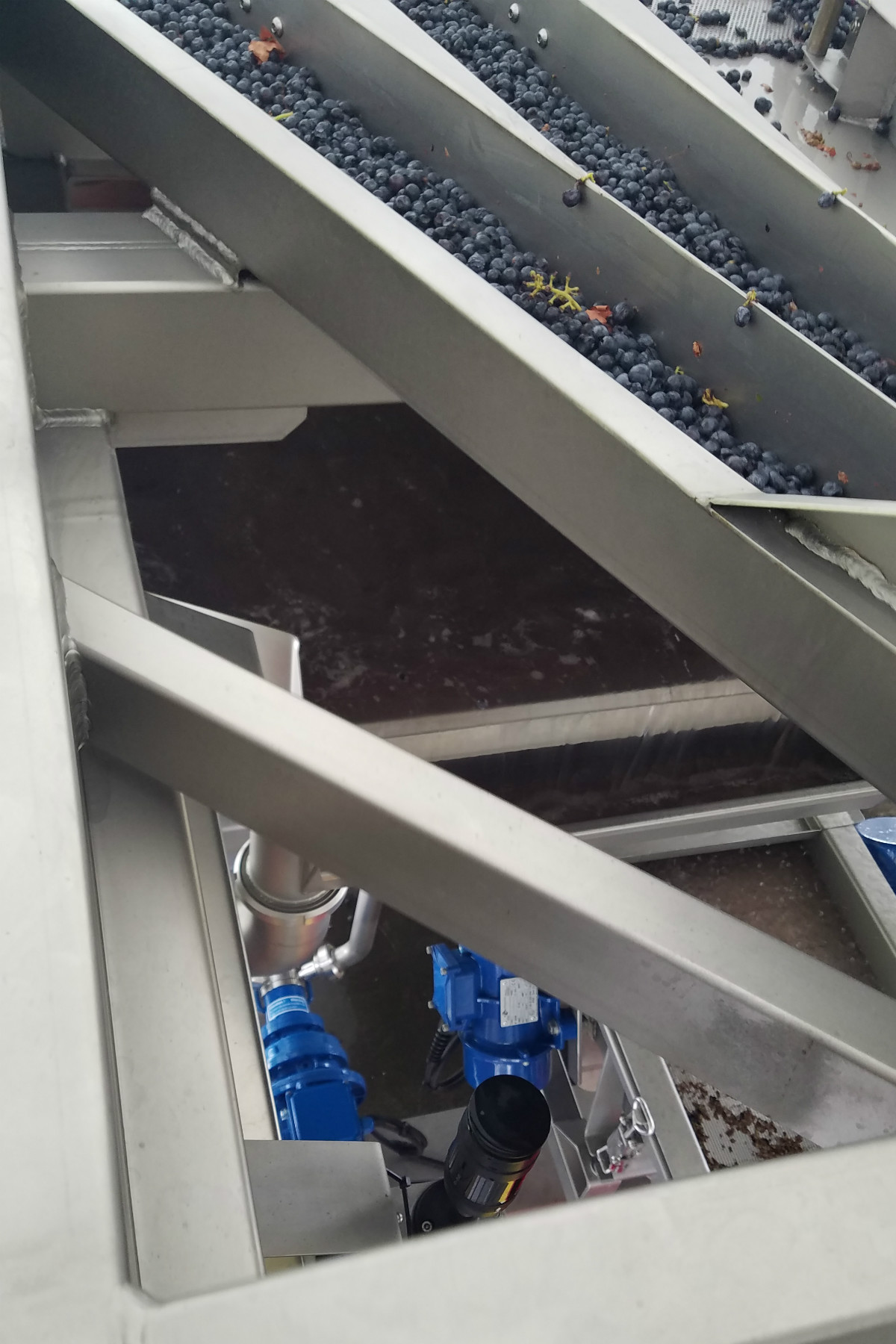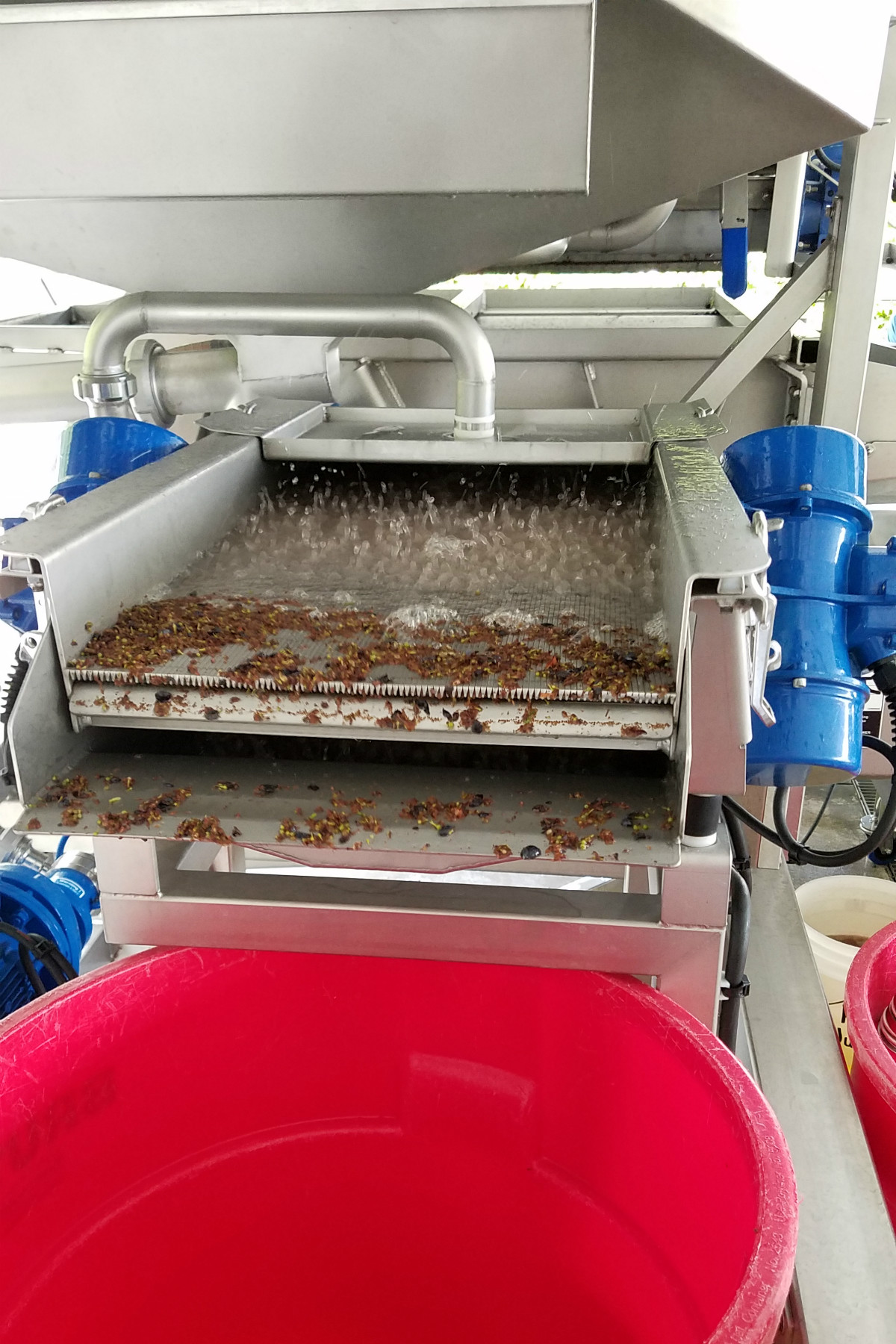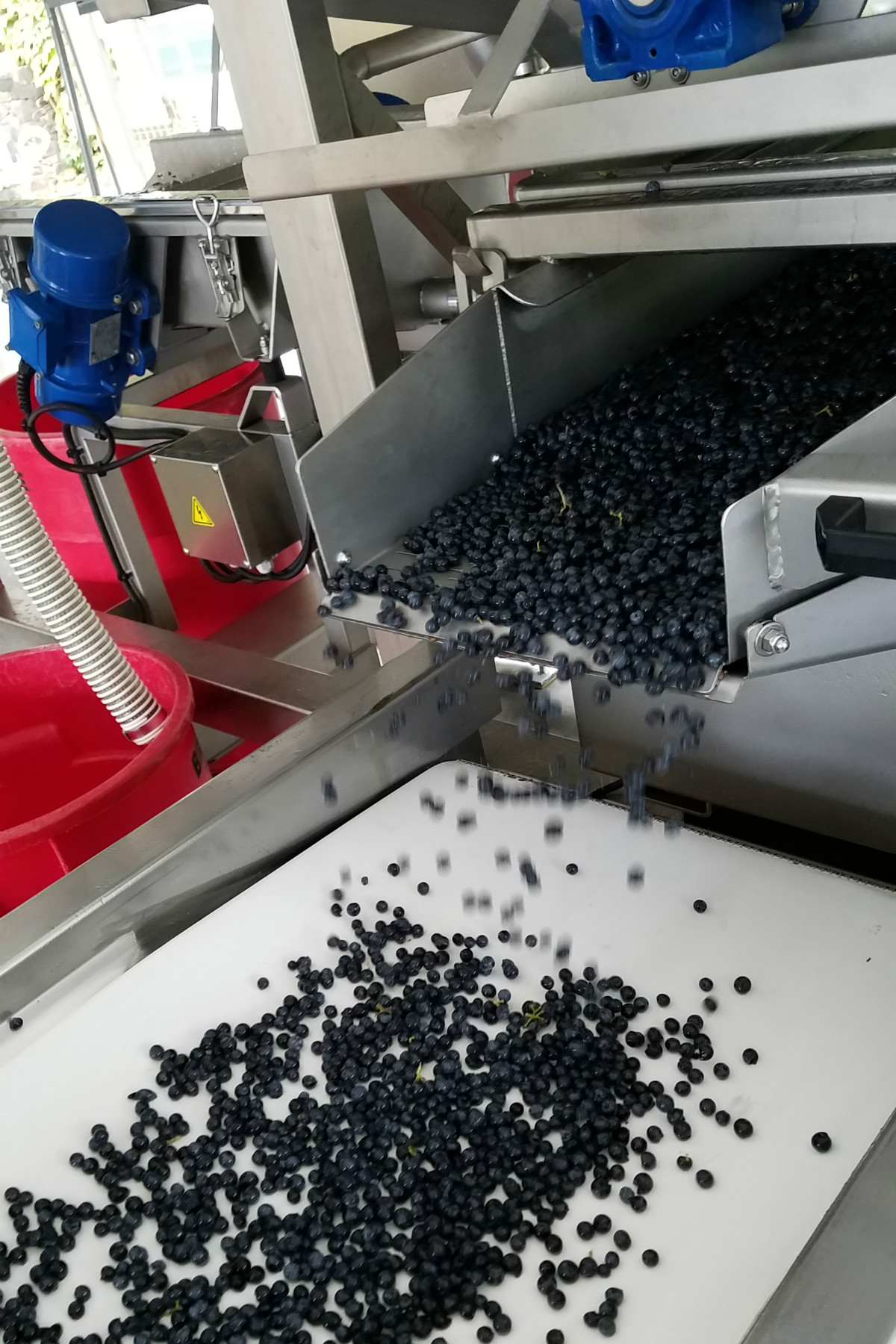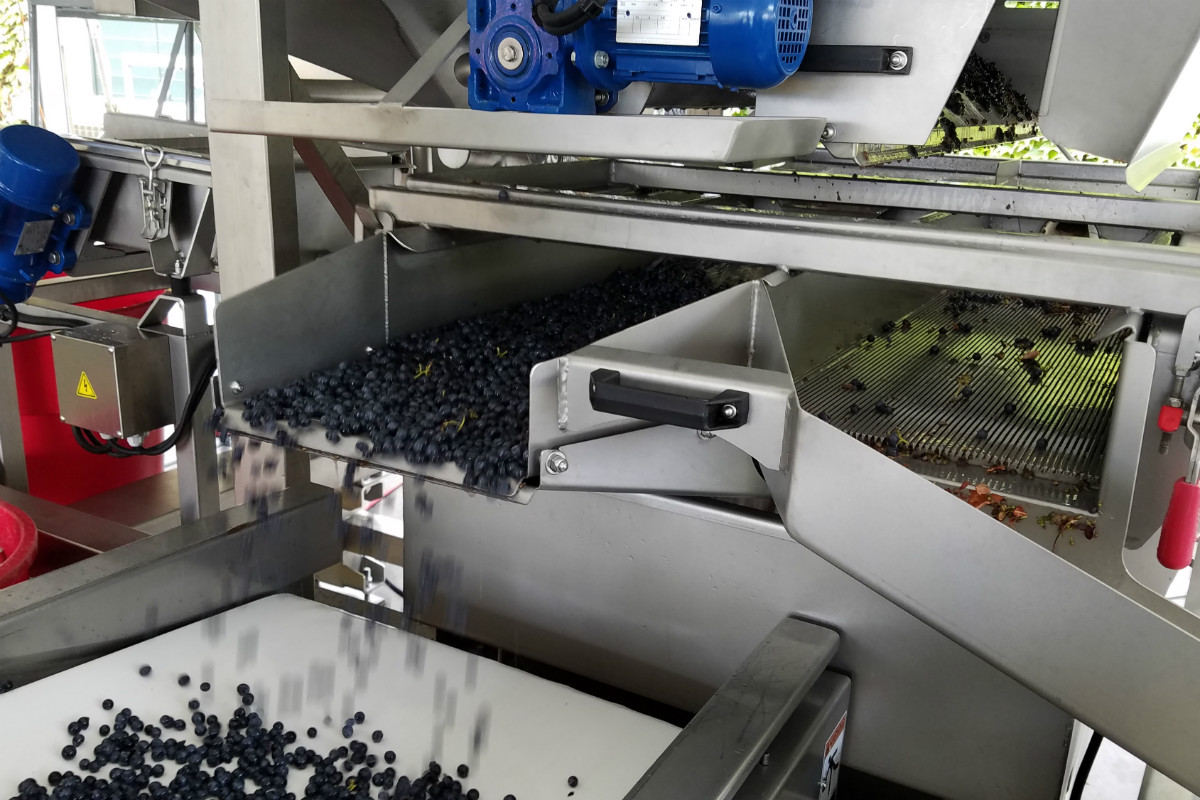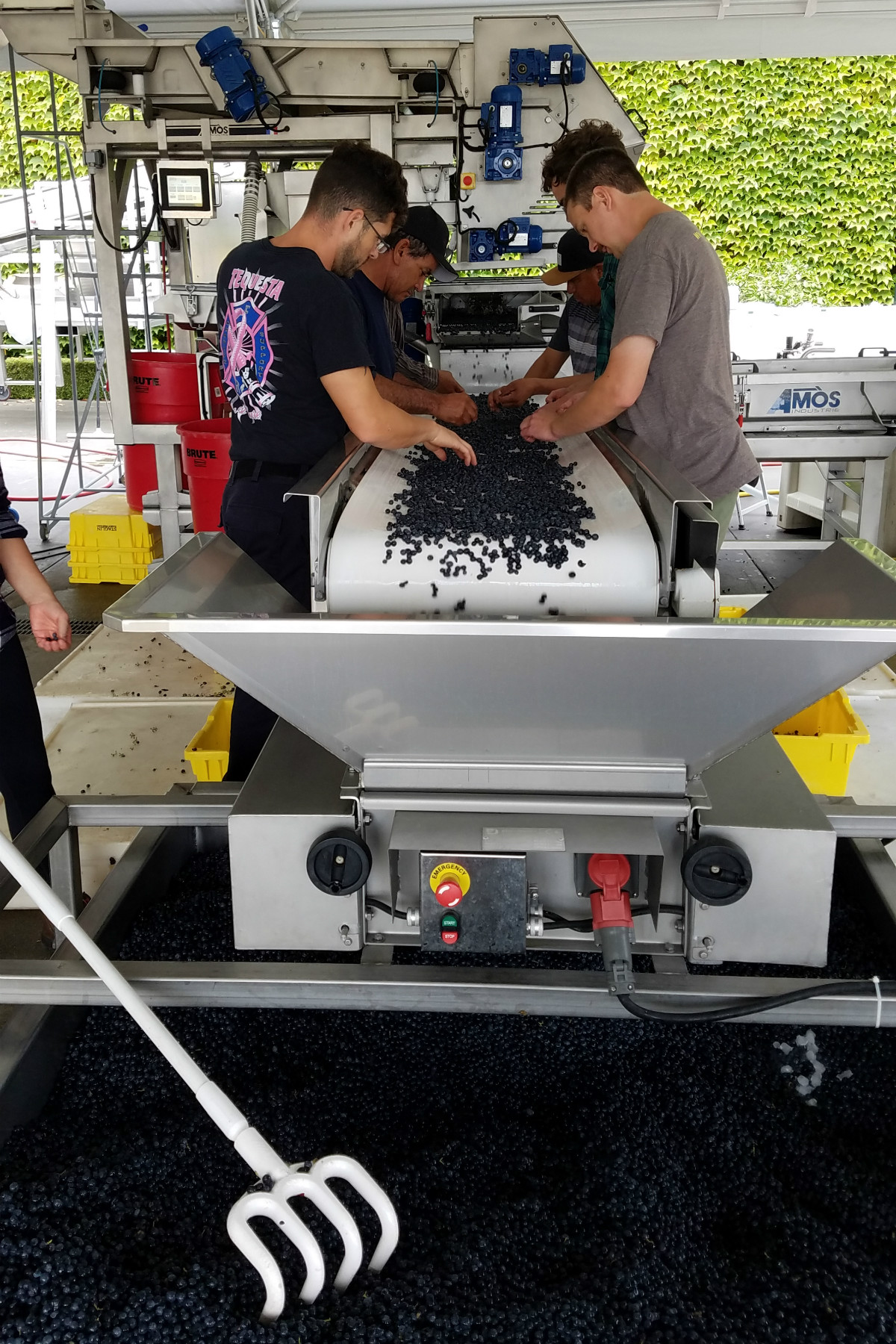By Dawn Dolan
Could the French Tribaie be the next big thing for ensuring quality of wine with its unique grape-sorting process?
This time of year Northern California is focused on grapes and the quality and condition in which they arrive at the winery: brix level, flavor profiles, seed color, bird damage, rot. To ensure quality, many wineries engaged in grape sorting, and at the basic level, that sorting starts with labor – a scarce commodity in California at this time.

A new option in the US market is the Tribaie Grape Sorter, made by the French company Amos Industrie and Staglin Family Vineyard, a high-end winery in Rutherford, Napa Valley was the first U.S. winery to buy and trial the Tribaie grape sorting machine on some of their fruit.
Normally the first line of quality control is hand-sorting the clusters of grapes; that is, removing all visible leaves, debris, and obviously bad bunches before the grapes hit the crusher/destemmer. Used for millennia, this process is constrained by the shortage of labor, and even in premier grape-growing areas labor issues push more and more wineries to use machine harvesters.
The winemakers at Staglin Family Vineyard were impressed by the Tribaie at a wine show in France and by some of the wineries that use it in Europe and decided to invest and try out in the machine. Company representative Gilles Deschamps was on hand for the trial of the new machine at Staglin during their Cabernet harvest.
The Tribaie offered a commanding presence on the crush pad. Using density to sort grapes, the machine bathes grapes in an infinity pool of sugar water and grape juice, which the winemaker adjusts to her preferred brix level by concentrating or de-concentrating the sugar content in the water. Grapes not dense enough due to lack of appropriate ripeness, float to the top of the solution and are siphoned off.
Optical sorters that employ high-speed cameras and image-processing software to quickly scan and sort destemmed grapes; eliminating grapes that are lacking in color and shape have received some criticism for removing good grapes inadvertently, and they struggle with white wine variety grapes. However, the Tribaie works equally for white and red grapes, as the machine uses density, not appearance, as a control.
Staglin picks everything by hand and the grape clusters were first fed into a de-stemmer. Next, the destemmed grapes were then led into a five-channel feeder, dispersing grapes into the bath in an orderly and even arrangement. Grapes not meeting the specific density settings, floated to the top while those meeting the density setting or heavier than the density setting sank to the bottom. The grapes that floated and the grapes that sank are then collected separately. Winemakers may choose to ferment only one of the groups of grapes or, one group of grapes for their primary wines and the other group for their secondary wines.
Grapes exiting the machine are clean, the layer of dust, vineyard treatments and unwanted aromas coating grapes this time of year washed away, and all grapes at or above the pre-determined brix level are collected separately while those below the pre-determined brix level are also collected separately. The sugar bath responsible for the specific density should be checked approximately every two hours, and be recalibrated as needed. If stored separately after use, the sugar solution can be reused after refrigeration and cold settling.
Each machine is made to order by Amos Industrie, who makes many types of winery and fruit harvesting equipment. They started with their first such machine seventeen years ago, and currently have 105 machines operating across Europe in countries like France, Spain, Italy, and Portugal.
Asked if they were specifically targeting Napa and Sonoma Counties where the average price per bottle is far higher than anywhere else in the US, Deschamps replied that they are targeting, “anyone who wants top quality, reserve wines.”
Taking hand-harvested or mechanically picked grapes equally, the Tribaie can eliminate labor expenses of sorting, while improving wine quality, which seems cost beneficial. However the overall price of the machine may prove prohibitive to wineries that produce wines at lower volume and price point, or are satisfied with their current product.
The tribaie is a versatile machine that can adapt itself to the brix level winemakers are looking for, because you can control the density of the bath solution. The machine consists of two different models that range from processing 5 – 20 tons of fruit per hour.
Offered in two sizes, Amos Industrie will be showcasing their larger Tribaie at the North Coast Wine Industry Expo, held at the Sonoma County Fairgrounds on November 30 this year. Although the first vintage of Staglin Family Vineyards wine won’t be available for a taste test, Gilles Deschamps will be on hand to discuss the machine with interested parties and will have wine samples from his clients in Europe on hand to show the difference between wines made from the A and B selections. He notes that a designated technician is already in place in the USA for the first Tribaie, and those to follow.










